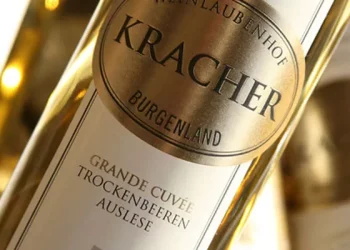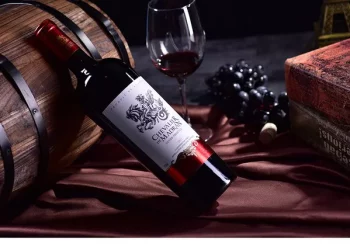I don’t know if you know much about “big wine“, which refers to a large structure, full body, rich and concentrated taste of wine.
So do you know how it’s brewed?
There are a variety of factors that affect the style of wine. Grape variety, climate and soil of producing area, vintage condition, viticulture method and brewing technology will have more or less influence on the style of wine, and the two factors that have the most significant influence are variety and climate.
Grape varietal characteristics play a key role in the formation of wine style.
In general, varieties such as chardonnay, Zinfandel and Syrah tend to produce large wines with full flavor, body, tannins and alcohol, while Pinot noir produces mostly softer, lighter wines, as determined by the nature of the variety.
At the same time, a warm or hot climate also plays a role in creating a great wine.
Longer growing periods, warmer temperatures and more light allow grapes to ripeness better and accumulate more sugar, resulting in fuller, more flavorful and higher alcohol wines.
Warmer, hotter climates also tend to thicken the skins of the grapes, increasing the tannin content of the wine, and the wines produced in these conditions tend to be more flavored with darker fruits such as plums, blueberries and blackberries.
Overall, grape-growing regions in Australia, Argentina, California, southern France and central and southern Spain tend to be warm.
What wines can be called big wines?
When people think of big wines, the first thing that comes to mind is California Cabernet Sauvignon.
Cabernet Sauvignon usually produces wines with a full body, medium to high tannins, high alcohol and moderate acidity, and California’s warm, rain-free climate makes it easy to produce large wines with structure and style.
California’s best cabernet Sauvignon wines tend to come from hotter, more inland regions such as the Napa Valley, which produces many highly regarded Cabernet Sauvignon wines, some of which have even received perfect scores from Robert Parker and his team.
Overall, California Cabernet Sauvignon shows a very direct fruity flavor, with rich dark fruits such as blueberries and blackberries and aromas of earth, dust, mocha and cedar. It is concentrated in flavor, full of tannins and has good aging potential.
2. The Southern Rhone Valley in France also produces many great wines.
Its geographical location is very close to the Mediterranean Sea, and the climate belongs to the typical Mediterranean climate, mild winter, warm and dry summer, which is very conducive to the growth and ripening of grapes.
The red wines are a blend of Grenache, syrah and Muraiwhite, with Grenache giving the wine more alcohol, spices and red fruits like raspberries.
Syrah and Muhewhite add black fruit and black pepper, and bring color and tannins that provide the backbone of the wine.
In addition, wines from the Southern Rhone Valley are often blended with other legal varieties from the region to give the wines more complexity and structure, and the resulting wines are often full-bodied, round and relatively high in alcohol.
3. California Zinfandel Zinfandel is one of the important business cards of American wine. It is widely grown in California and occupies a pivotal position.
The breed was introduced to the United States from Europe in the 19th century, and has since flourished in California, where the terroir is superior.
Today, California’s Napa Valley, Sonoma, Paso Robles, and Lodi in the Central Valley all produce excellent zinfandel wines.
By zinfandel produce red wine usually style is bold and unrestrained, fruity, directly show the blackberries, strawberries, peaches and jam flavor, to full bodied, tannin content is higher, zinfandel wines produced in California are also with charming of licorice, spice and pepper flavor, and most of the alcohol content of wine between 14% abv to 17% abv,
It is a typical large wine.
4. Australian shiraz Silas to Australian shiraz is known, by its style of wine usually robust, full-bodied, high tannins, with a lively berry and plum flavors, but also accompanied by spicy aroma, hot summer is here again in Australia wine has brought more complexity and structure.
However, Australia is a vast country, and Shiraz wines can vary by region and climate, with cooler southern climates or higher elevations producing more elegant wines,
Such as the Yarra Valley, Geelong and Mornington Peninsula;
The warmer, hotter regions further north, such as the Barossa Valley, Vale and Clare Valley, tend to produce large, full-bodied wines with plenty of texture.
Of course, in addition to these wines, there are other regions with warm or hot climates that can produce strong, full-bodied wines.
At the same time, not all wines from warm or hot regions fall into the grand category, and winemakers can make relatively elegant wines by choosing vineyards at higher altitudes, harvesting grapes early or using gentle extraction.
The latest market dynamics at any time to see, please pay attention to.












































